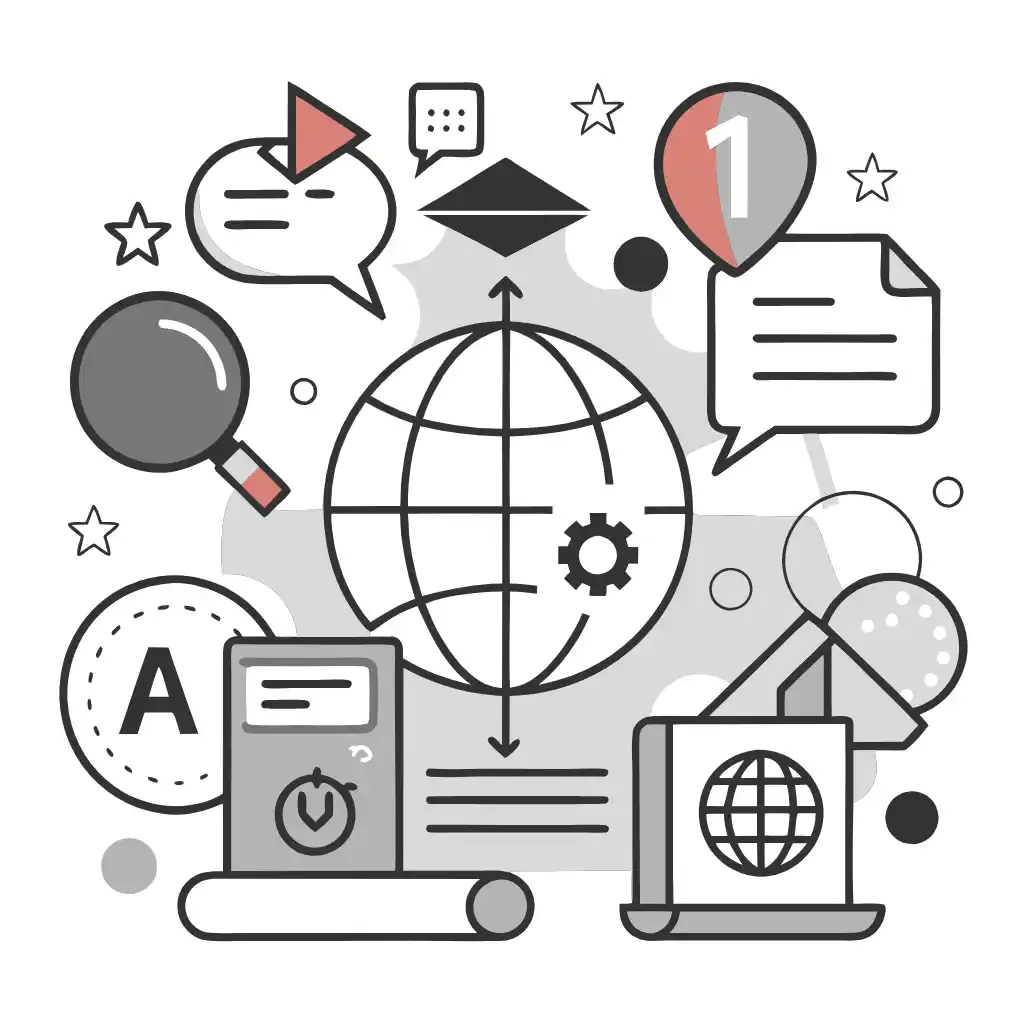Enhancing Workflow Efficiency in Your Website Translation Project with ConveyThis
The Imperative Transition to Multilingualism in the Global Business Landscape
In a world where a vast majority of global consumers dismiss products not offered in their vernacular, enterprises aiming to flourish on a global scale are recognizing the non-negotiable necessity of website translation. No longer is it a choice, but rather a requirement.
This notion is further emphasized by recent data indicating only a quarter of global internet users are native English speakers. The underlying message is clear: three-quarters of online consumers prefer to surf the internet and execute transactions in languages besides English. Consequently, the commercial logic advocating for multilingual websites is undeniable. Although translation serves as the cornerstone of comprehensive website localization, the perceived cost, intricacy, and duration of such endeavors might be intimidating.
However, the array of methods for implementing multilingual projects has significantly transformed over the past decade, owing to the advent of innovative technology-driven solutions that can enhance and simplify your translation workflow. In the following discussion, we examine how certain modern methods surpass traditional techniques in streamlining your translation workflow.


The Evolution of Multilingual Solutions in Website Localization
In the era preceding contemporary multilingual tools, the task of website localization via translation was notably labor-intensive. Essentially, the process relied on proficient translators cooperating with content and/or localization managers within an enterprise.
Within a typical corporate structure, the workflow would kick off with the content manager disseminating spreadsheet files containing vast amounts of text to the individual tasked with overseeing the firm’s localization endeavors. These files would be brimming with lines of text and terminology that required accurate translations.
Following this, these files would be allocated to professional translators. If the intention was to translate a website into multiple languages, this often necessitated enlisting the services of various proficient translators, which presented its own set of challenges, particularly when dealing with less common languages.
This operation usually entailed considerable interaction between translators and localization managers, as translators sought to ensure the contextual accuracy of the content to deliver the most precise translation feasible. However, once this discourse was completed, the real labor was only beginning. The firm then needed to engage their web development team or outsource professionals to integrate the newly translated content into their website.
The Challenges of Traditional Multilingual Projects: A Closer Look
Needless to say, the previously described process is far from optimal and could easily deter anyone contemplating a multilingual endeavor. The main shortcomings of this traditional method include:
Expenses incurred: Engaging professional translators for your translation project can be a significant financial burden. With the average rate of $0.08-$0.25 per word, the total cost could rapidly escalate. For instance, a website with 10,000 words might cost an average of $1,200 and that’s just for a single language translation! The cost multiplies with every additional language.
Time inefficiency: This method is particularly time-consuming, which becomes a problem for companies that require thousands, or even hundreds of thousands of words translated into various languages. The traditional workflow often attempts to handle everything simultaneously to avoid continuous back-and-forths, resulting in a process that could span up to six months to complete all translations.
Monitoring translator progress: Communication between the organization and outsourced translators can be challenging due to the nature of the conventional workflow. Without the ability to provide real-time feedback, you risk receiving out-of-context translations or engaging in excessive back-and-forths – both of which waste valuable time.
Integrating the translations: After completing the translation of your content, the daunting task of integrating these translations into your website remains. This requires either hiring web developers or utilizing your in-house team to create new pages. A more affordable and efficient option could be to use language-specific subdirectories or subdomains for your newly translated content.
Lack of scalability: Traditional translation approaches also fall short in terms of scalability. For instance, when uploading new content, the cycle of reaching out to translators and developers starts anew, which is a considerable hurdle for organizations regularly updating their content.


Harnessing Technological Advancements for Streamlined Multilingual Workflow: An Innovative Strategy
In the digital age, a revolutionary tool has emerged, fusing AI with human expertise to revolutionize multilingual workflow, enhancing both velocity and cost-efficiency.
On implementation, this tool swiftly identifies all the elements on your website, inclusive of material from other plugins and apps, and any fresh content added subsequently. Through a neural machine translation system, an immediate translation of detected content is provided. Moreover, the software facilitates the immediate publishing of translated pages, offering the choice to keep them in draft mode.
The convenience of this process is the elimination of time-consuming manual tasks, such as creating individual pages for every language, and the need for coding. Easy accessibility to the translated content is guaranteed through an automated language switcher addition to the website’s interface.
Although machine translations are reliable, an option to manually adjust them is available for utmost satisfaction. The system’s intuitive translation management interface enables quick adjustments to translations, instantly reflected on the live website, eliminating the need for external web services.
The tool fosters collaborative efforts, enabling easy distribution of work among team members, thereby boosting workflow efficiency. In case of collaboration with professional translators, two options exist: including them in the project, allowing them to work directly within the dashboard, or ordering professional translations from within the dashboard itself.
Revolutionizing Global Reach: A Hybrid Paradigm in Advanced Machine Translation
In the digital age, a revolutionary tool has emerged, fusing AI with human expertise to revolutionize multilingual workflow, enhancing both velocity and cost-efficiency.
On implementation, this tool swiftly identifies all the elements on your website, inclusive of material from other plugins and apps, and any fresh content added subsequently. Through a neural machine translation system, an immediate translation of detected content is provided. Moreover, the software facilitates the immediate publishing of translated pages, offering the choice to keep them in draft mode.
The convenience of this process is the elimination of time-consuming manual tasks, such as creating individual pages for every language, and the need for coding. Easy accessibility to the translated content is guaranteed through an automated language switcher addition to the website’s interface.
Although machine translations are reliable, an option to manually adjust them is available for utmost satisfaction. The system’s intuitive translation management interface enables quick adjustments to translations, instantly reflected on the live website, eliminating the need for external web services.
The tool fosters collaborative efforts, enabling easy distribution of work among team members, thereby boosting workflow efficiency. In case of collaboration with professional translators, two options exist: including them in the project, allowing them to work directly within the dashboard, or ordering professional translations from within the dashboard itself.

Translation, far more than just knowing languages, is a complex process.
By following our tips and using ConveyThis , your translated pages will resonate with your audience, feeling native to the target language.
While it demands effort, the result is rewarding. If you’re translating a website, ConveyThis can save you hours with automated machine translation.
Try ConveyThis free for 3 days!
 No card details
No card details